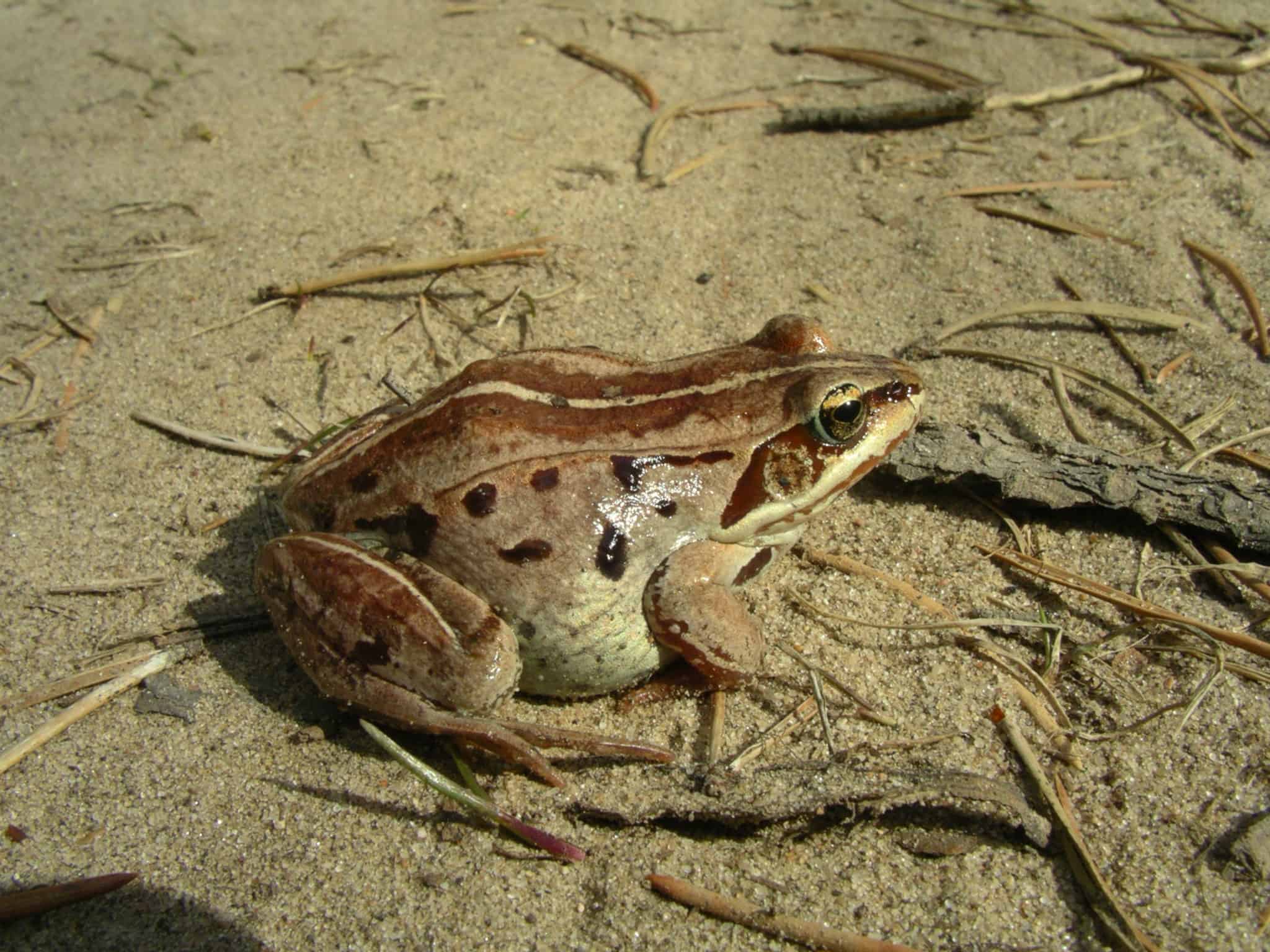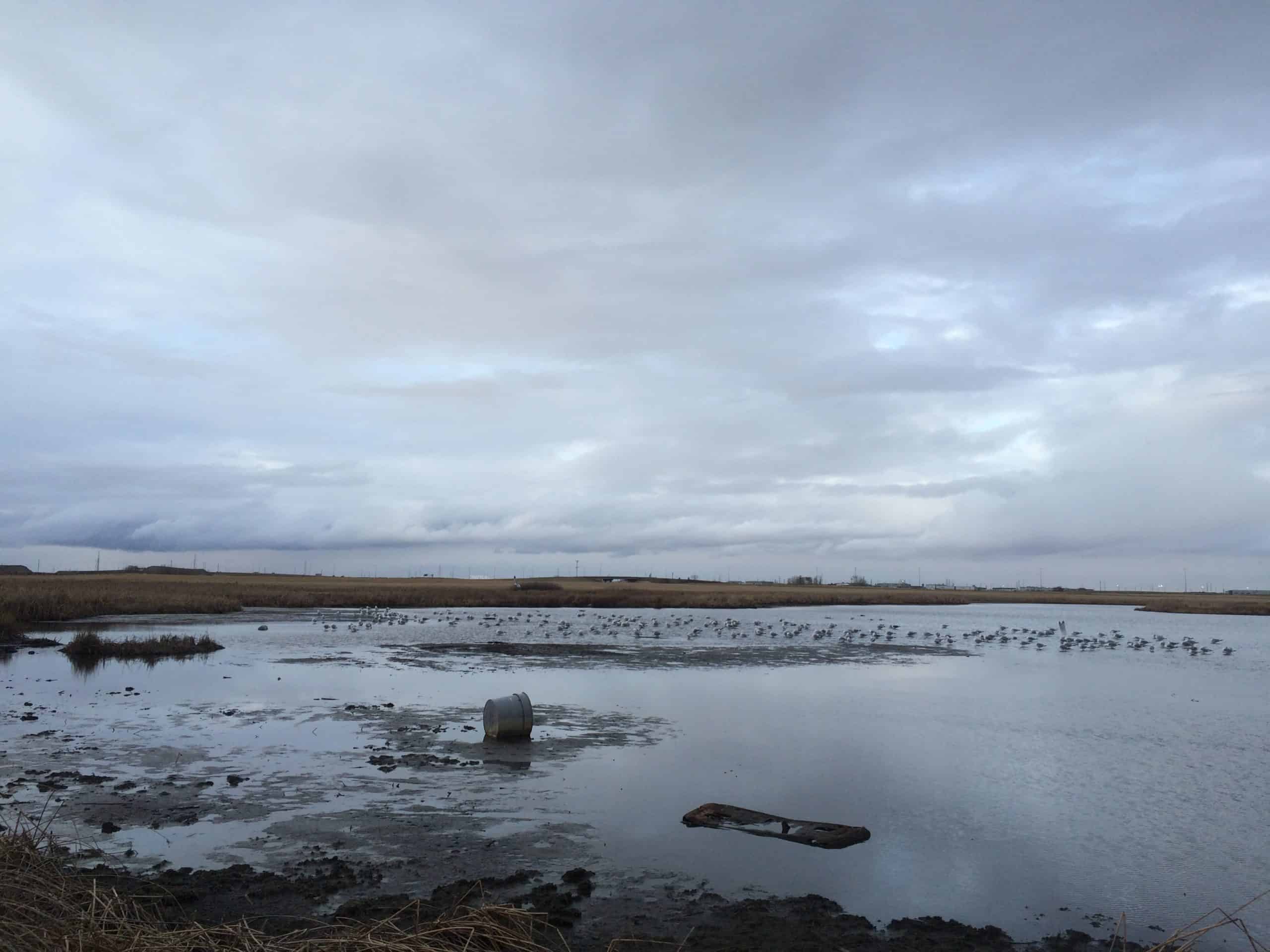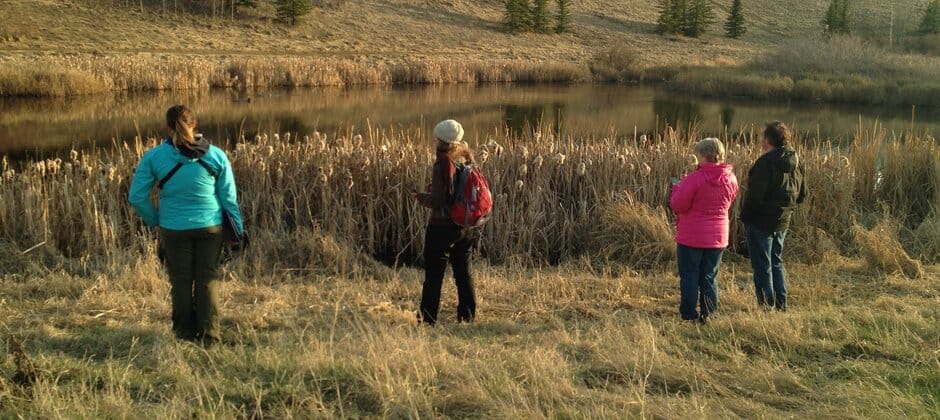Share this article
Calling for urban amphibian habitat connectivity
City planners may help improve and maintain amphibian diversity by keeping the sometimes sparse urban wetland areas connected.
New research tracking the diversity of frogs and salamanders in downtown Calgary, Alberta found that the most urban parts of the city were unsurprisingly the least rich in species diversity.
“We constantly make decisions that aren’t good for biodiversity in our cities,” said Tracy Lee, director of conservation research at the Miistakis Institute, a nonprofit that focuses on environmental problems, at Mount Royal University.

Wood frogs are among the amphibian species found in urban Calgary. Credit: Kris Kendell
For a study published recently in Ecological Solutions and Evidence laying out a framework for prioritizing urban wetlands and movement corridors, she and her colleagues spent three years studying wetlands in Calgary. With the help of citizen scientists, they surveyed more than 54 wetlands, conducting an average of six surveys per year for each wetland. The project was called “Call of the Wetland,” and involved more than 200 Calgarians who monitored wetlands and listened to amphibian calls at night.
The best habitats with the most species diversity occurred at the edges of the city, they found, while wetlands in denser urbans areas had the least diversity—if they had amphibians at all.
“As you move toward the center, the wetlands become very isolated,” Lee said.
In these areas, barriers like buildings, roads and other objects that can stop amphibians from migrating between seasons, or from dispersing to new areas, are a lot more concentrated.

Wetlands on the edge of the city had higher amphibian diversity than those in the center.
Credit: Miistakis Institute
They also found that overall amphibian diversity has dropped in Calgary. Historically, six amphibian species were reported. But now only the tiger salamander (Ambystoma tigrinum), wood frog (Lithobates sylvaticus) and boreal chorus frog (Pseudacris maculate) are still found there. Recent surveys found no trace of the historically present Canadian toad (Anaxyrus hemiophrys), western toad (A. boreas) and northern leopard frog (L. pipiens).
Part of the problem is that city planners often manage urban wetlands with other goals like storm water control in mind rather than amphibian diversity and habitat connectivity. But Lee said that both are important for diversity.
“There’s a lot of good intent, but it’s a whole other level of complexity as far as goals of a wetland,” she said.
As a result, it’s important to keep pushing city policymakers to consider the connectivity of urban wetlands, especially in the outer edges of the city where new development is often slated.
“I don’t think the work ever stops,” she said.
Header Image: Citizen scientists survey amphibian populations in the Calgary area. Credit: Miistakis Institute








